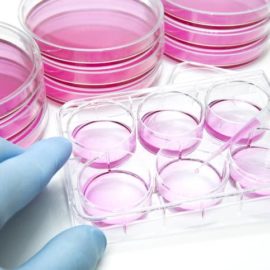Before introducing mitophagy, we’ll cover some key concepts. Mitochondria are rod-shaped cellular organelles often referred to as the powerhouses of the cell. They earned this name because they help convert the energy we get from food into energy that the cell can use. This process is called aerobic respiration, which converts oxygen and nutrients into adenosine triphosphate (ATP). ATP is the chemical energy ‘currency’ of the cell that powers metabolism. But mitochondria are essential for multiple other biological processes, including metabolites biosynthesis, cell death, and immunological responses, among other things.
Recent advances in the field of immunology have revealed the pivotal role of metabolism in innate immune cell fate and function. Proper mitochondrial function is essential for the establishment and maintenance of immune cell activity. Mitochondrial defects, characterized by cytoplasmic calcium elevation, increased reactive oxygen species (ROS) levels, and pronounced release of pro-apoptotic factors and mitochondrial DNA (mtDNA), are key stimulators of inflammatory response pathways. Therefore, the maintenance of mitochondrial network integrity and activity is a prerequisite for immune system well-being.
Problems in quality control
This leads us to mitophagy. Also known as mitochondrial selective autophagy – or mitochondrial quality control – the process of mitophagy surveys mitochondrial population, eliminates superfluous and damaged organelles, and mediates cellular survival and viability in response to injury or trauma, as well as infection. Impaired removal of damaged or superfluous mitochondria leads to hyperactivation of inflammatory signaling pathways and, subsequently, to chronic systemic inflammation and development of various inflammatory diseases.
Recent studies have shown that mitochondria, and mitophagy especially, play a central role in aging. With age, mitochondria show changes in morphology, mutation in mtDNA, increase in oxidative stress, epigenetic crosstalk with the cell nucleus, and defects in mitochondrial quality control, leading to the accumulation of dysfunctional mitochondria. The impairment of mitophagy inhibits removal of superfluous or dysfunctional mitochondria, which results in the aggregation of mitochondrial mass and consequently leads to the deterioration of cellular function.
Lopez-Otin used three simple criteria to define the hallmarks of aging:
1. manifestation during normal aging,
2. experimental aggravation accelerating aging,
3. experimental amelioration slowing down aging.
According to this study, the nine hallmarks of aging fulfilling these criteria are genomic instability, telomere attrition, loss of proteostasis, deregulated nutrient sensing, altered intercellular communication, cellular senescence, stem cell exhaustion, epigenetic alterations and mitochondrial dysfunction.
Tracking the issue with MitoTracker®
In order to study mitophagy, many processes need to be investigated to gain an accurate measurement of the degree and/or regulation of this process, as well as its role in cellular homeostasis and the development of diseases. Many of these mitophagy studies employ fluorescence microscopy to visualize mitochondrial morphology, mass, and functional state.
MitoTracker® dyes carry a thiol-reactive chloromethyl group that covalently binds to proteins within the mitochondria, thereby allowing the dye to be better retained within mitochondria. For this reason, these dyes can be used to track morphological changes as well as changes in mitochondrial numbers or mass after the induction or inhibition of mitophagy, thus giving invaluable support in in vitro analyses.
The proven anti-aging powerhouse
DetoskinTM is a combination of trehalose and paeoniflorin intended to detoxify and rejuvenate the skin, activate natural mitochondrial recycling mechanism, as well as to remove damaged mitochondria that accelerate the aging process.
Trehalose is a natural disaccharide derived from starch, and paeoniflorin is obtained from a root fraction of Paeonia lactiflora, also known as peony, the queen of flowers.
The efficacy of DetoskinTM in vivo was reported by 32 women, from 40 to 60 years of age, showing signs of aging facial skin – DetoskinTM reduced the ROS in the skin by 64% on day 56 among other benefits.
No comments yet
There are no comments on this post yet.





Leave a comment